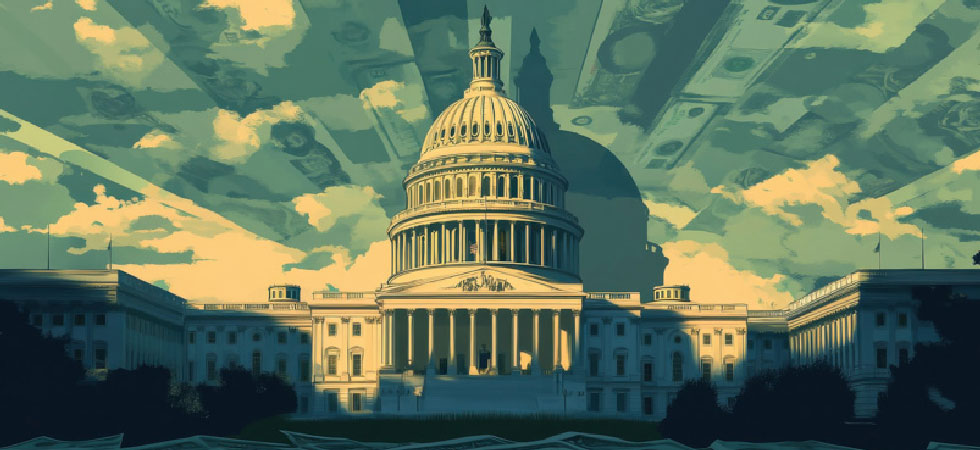
For the past 10-plus years, a whirlwind of changes has swept across the energy landscape. Energy marketers have often had to weather the whiplash of competing political ideologies, from incentives to promote cleaner energy and regulate traditional energy sources on one side to deregulation efforts on the other. In the face of these debates, renewable propane remains a vibrant, blooming branch on the larger tree that is the propane industry.
Although there is fascinating research being put forward on renewable propane production, from exploring creative biomass fuel sources to tinkering with ways to bring the experimental fuel up to scale, renewable propane faces major questions on the ground.
Can the fuel be scaled? Is there a real market for renewable propane? In a political landscape that oscillates between carbon emissions regulation and deregulation, where does renewable propane belong? And where, exactly, does renewable propane stand right now?
The Current Landscape of Renewable Propane
The Trump administration has explicitly expressed support for and released executive orders that call for increased conventional energy production. The propane industry has welcomed these moves. But what about some of the harder-to-define areas of the energy sector — more “gray” spaces that are occupied by experimental energy sources like biomass fuels? There’s a saying I’ve come to appreciate as I’ve grown older: Follow the money.
To understand the current opportunities for renewable propane, it’s helpful to take stock of the current funding across the energy sector. Here are some of the tangible ways the current administration is investing — and divesting — in renewable propane.
Department of Energy Notice of Funding Opportunity
In December 2024, the Department of Energy (DOE) Bioenergy Technologies Office (BETO) announced its intentions to establish a funding opportunity — up to $23 million — for research and development of renewable chemicals and fuels, including renewable propane. The funding opportunity is a rare example of a clean energy initiative that has not been retracted or struck down by the Trump administration.
According to DOE, the notice of funding opportunity “will support BETO’s conversion technologies program area priorities by advancing innovative technology pathways for affordable fuels and products, leveraging renewable resources and generating domestic jobs to accelerate the U.S. bioeconomy.”
Applicants for the funding were required to submit full applications by May 30, with selections taking place in October (selections had not been made at press time). Each research project is eligible to receive up to $2.5 million, granted it meets the following expectations:
- ASTM D1835 specifications
- Have a system energy consumption of no more than 50% of higher heating value of the finished LPG
- Achieve a reduction of net greenhouse gases relative to fossil LPG of at least 70%
It remains uncertain whether the full funding amount will be awarded to applicants and by what standards the current administration will select award recipients.
The One Big Beautiful Bill Act
The Trump administration’s momentous spending bill, the One Big Beautiful Bill Act (OBBBA), passed by a thin margin and was signed into law July 4. It is likely the largest and most prevalent piece of legislation that will directly impact the energy sector in the near future. Sweeping in nature, the impacts of the bill on the energy sector — and on the propane industry, specifically — will likely only be fully understood and appreciated with time.
Highlights include:
- Increased rate of mandatory gas and oil lease sales on federal lands, while eliminating the Biden administration’s requirements for renewable energy leasing
- Reinstated 100% bonus depreciation for qualifying property
- Postponed methane emissions fee that exceeds certain thresholds to the calendar year 2034
- Extended the clean fuel tax credit through 2029
- Accelerated phase-out periods for various Inflation Reduction Act clean energy programs, including the Residential Clean Energy Credit, Energy Efficient Home Improvement Credit, New and Used EV Tax Credit, Clean Electricity Investment and Production Credits and the Alternative Fuel/Refueling Property Credit
To reiterate, it’s likely impossible to assess how OBBBA’s changes to the energy landscape will play out for renewable propane production. While some changes might seem to obstruct or hurt renewable propane production — insofar as the bill implements changes that largely target most renewable and clean energy initiatives — the reality for renewable propane and even conventional propane is likely far more complicated.
For example, while the bill makes a point of targeting electric, solar and wind energy tax incentives, it remains relatively silent when it comes to directly addressing clean fuels. In fact, OBBBA extends the Clean Fuel tax credit through 2029, a tax credit that has benefitted the propane autogas and renewable propane industries, among others.
But to make matters more complicated, actions that appear to directly impact electrification efforts alone might additionally impact the more niche propane and renewable propane markets. OBBBA phases out both the Residential Clean Energy Credit and the Energy Efficient Home Improvement Credit. Under the latter, certain propane water heaters qualified for a tax rebate.
OBBBA also phases out the Alternative Fuel/Refueling Property Credit, a program that has benefitted both electric vehicle production and propane autogas production. Besides allowing autogas sites to directly qualify for credits for refueling infrastructure, increased electric vehicle use and a demand for charging stations presents an opportunity for propane and renewable propane manufacturers to step in as a solution — rather than merely a competitor — to the strained demands on the electric grid, especially in remote, rural areas (see BPN’s August 2024 Beyond the Mains column for more information).
That being said, it is nevertheless true that OBBBA seems to largely benefit fossil fuel production. Where the act addresses renewable and clean energy initiatives, it is, for the most part, to phase out such programs. If OBBBA ushers in an overall decline in credit and grant opportunities for renewable research, this raises the question of where renewable propane stands. This is especially the case in light of the other ways the Trump administration has gone about defunding renewable energy.
Miscellaneous Clean Energy Cuts
Amid the flurry of activity that marked President Donald Trump’s first months in office, the DOE and the Environmental Protection Agency (EPA) have announced funding cuts to many clean energy programs. Funding cut announcements include:
- $7.56 billion in financial awards for 223 energy projects across states that voted for Kamala Harris in the 2024 presidential election
- 2026 Budget Proposal cuts, including:
- $2.5 billion from DOE Energy Efficiency and Renewable Energy department
- $80 million in Department of Interior renewable energy programs
- Cuts EPA grants to nongovernmental organizations
Similar to OBBBA, the main target of these proposed cuts are clean energy projects involving hydrogen, wind, solar and electric energy. Once again, cuts like these raise the question of what incentives will exist for renewable propane development in the future.
Recent cuts in clean energy development have directly impacted ExxonMobil, which was in the process of researching and developing clean hydrogen. Chevron owns and operates one of the major renewable propane programs in the country. In an environment where experimental fuels largely depend on government investment and the powerful infrastructure of established companies, it is unclear the extent to which these cuts will impact the “main players” in the fuel space going forward and their motives to develop fuels like renewable propane.
Why Should Propane People Care?
In light of the generally favorable ways in which the Trump administration is streamlining business permits, increasing land access for fossil fuel companies and potentially decreasing operational costs, why should we care about what’s happening in the clean energy space? There’s a temptation to relegate clean energy concerns to the sidelines — and likely for good reason. Some clean energy spaces may seem, after all, to be in many ways in direct competition with our own.
Most in the propane industry deal with traditional propane sourced from crude oil. In the course of a typical propane industry member’s workday, renewable propane may rarely come up as a topic, and when it does, it may be treated as a hypothetical rather than a tangible product. It makes sense that the push for the deregulation of conventional propane and its related market applications tends to rule the day.
Yet if history has taught us anything, it’s that new technologies and shifting values and concerns tend to bubble up whether we want them to or not. It can’t hurt to be an industry that is primarily curious. As Propane Education & Research Council President Tucker Perkins often says, we need a “wide path” approach to energy, one that appreciates innovation and sees opportunity where it might be tempting to see threats.
In fact, innovation has been at the center of the propane industry ever since the chemist Walter O. Snelling discovered that gases dispersed from gasoline could be liquefied and converted into a new type of fuel: “liquefied” petroleum gas. Or as it would come to be called, “propane.”


